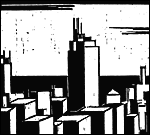Janet Malcolm, The Journalist and the Murderer (Alfred A. Knopf, 1990) Reissued in paperback by Vintage in 1990 In this slim volume—only 163 pages, including the afterword—Malcolm reflects on journalism, as a journalist. She focuses on an unprecedented lawsuit from 1984, in which an author (Joe McGinniss) was sued by a convicted murderer (Jeffrey MacDonald) for writing about his crime in the book Fatal Vision. Malcolm confronts the murky terrain that inevitably occurrs between a journalist and a subject - the moral impasse inherent in the trade. Malcolm's approach is merciless: she dissects the case, interviewing the journalist and the murderer, their lawyers, the jury members, and the expert witnesses from the trial. She begins, "Every journalist who is not too stupid or too full of himself to notice what is going on knows that what he does is morally indefensible." Her essay precedes from there into an unflinching expose of a journalist's subject as 'prey' and the journalist as little more than a conman. The case allowed, for the first time, not the truth or falsity of a published piece to be challenged, but the journalist's point of view. The premise of the lawsuit held that McGinniss had manipulated or misled MacDonald into thinking that he, as a writer, was sympathetic to the convict's story, a deception MacDonald believed during their four-year relationship. When the book came out, however, that sympathy had vanished. The MacDonald-McGinniss case, and Malcolm's book, confront the issue of whether a writer could violate the rules of journalism. "So a novelist is the same as a journalist, then. Is that what you're saying?" Judge William J. Rea asked during the MacDonald-McGinniss trial. Prior to writing this piece, Malcolm herself was sued by Jeffrey Masson, the subject of her book In the Freud Archives (Masson v. The New Yorker Magazine, 1991). In the highly publicized $10 million libel suit, Malcolm was accused of fabricating facts and misquoting Masson — accusations that ran nationally, including in The New York Times in 1989 — but the suit was dismissed several years later following a series of appeals by Masson. When her article about MacDonald and McGinniss first appeared in The New Yorker, some critics contended that it was an inherent confession of her guilt toward Masson, a contention she hastily dismissed. In The Journalist and the Murderer, Malcolm dissects the power dynamics between a "naïve" subject and a journalist. Malcolm stipulates that the journalist's obligations in this muddled relationship are clear and obvious: understanding the limitations of a non-fiction writer and using carefully the narrative devices of fiction so that something which might be literally true is not falsified through technique. Much of Malcolm's early work appeared in The New Yorker and focused on art and design. She was born in Prague in 1934 and lived there until she was four years old. Her other books include Reading Chekhov, Diana and Nikon: Essays on Photography, Psychoanalysis: The Impossible Profession, The Purloined Clinic: Selected Writings, The Silent Woman: Sylvia Plath and Ted Hughes, The Crime of Sheila McGough. From The Boston Globe: "In The Journalist and the Murderer, [Malcolm] managed to make her own profession seem as suspect as the crimes it sought to cover." But Jeffrey Dvorkin, NPR's Ombudsman, noted that, in response to Malcolm's opening salvo cited above, "in my experience most journalism doesn't happen like that. But there are times when it does." The Journalist and the Murderer is among the Modern Library's 100 Best English-Language Books of the 20th Century. MORE: Salon.com interview with Malcolm Professor Robert Boynton’s Essay on Malcolm (from Mirabella, 1992) |
 |
|||||||||||||||||||||||||||